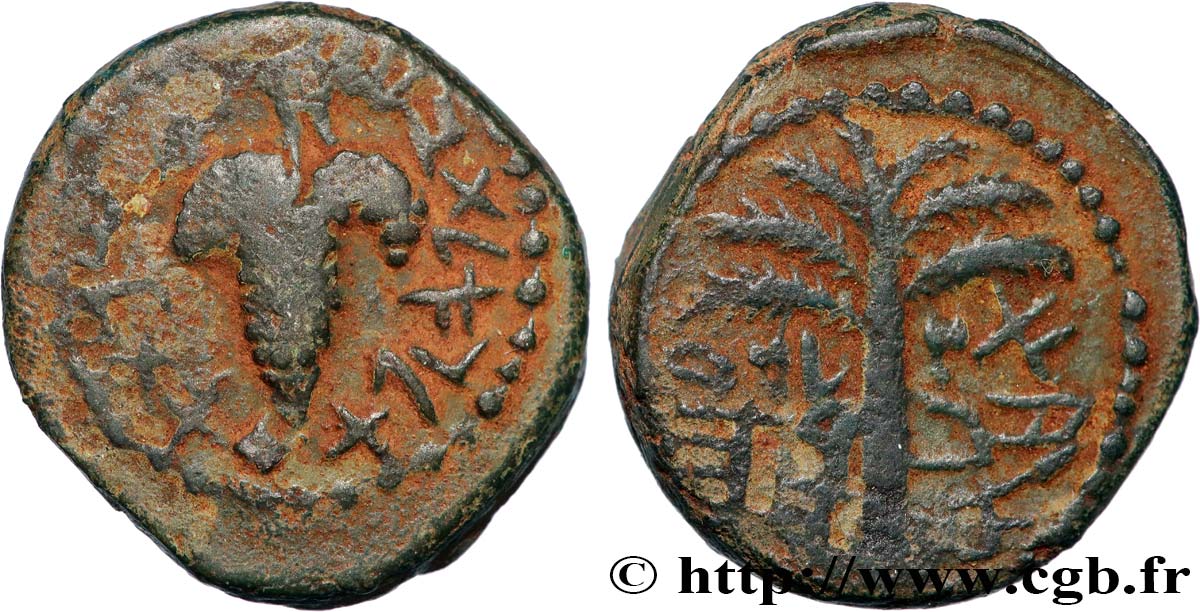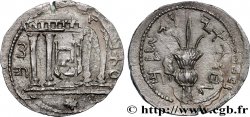Obverse
Obverse legend : INSCRIPTION HÉBRAÏQUE.
Obverse description : Feuille de vigne.
Obverse translation : (An 1 pour la liberté de Jérusalem).
Reverse
Reverse legend : INSCRIPTION HÉBRAÏQUE.
Reverse description : Palmier avec sept palmes.
Reverse translation : (Eleazar le prêtre).
Commentary
Historical background
JUDAEA - SECOND REVOLT - BAR KOKHBA
(132-135)
In 132, to force assimilation and put an end to rebellious Judaism, the Emperor Hadrian decided to build on the ruins of Jerusalem (destroyed by Titus in 70) a Greco-Roman city, Ælia Capitolina (Ælius is the family name of Hadrian), and the plan foresaw, supreme desecration, the construction of a temple dedicated to Capitoline Jupiter on the ruins of the Temple. In addition, the "lex Cornelia de sicariis et veneficis" prohibits circumcision and the Sabbath. This religious persecution provokes an armed revolt, following the example of the Maccabees. Simon Ben Cocheba (or Kosiba) takes the lead of the movement, posing and recognizing himself as the Messiah by becoming Bar Kokhba "son of the star". He leads the guerrillas and initially achieves some success, despite the rivalries within his camp.. But he cannot prevail over the legions that have come as reinforcements from across the Empire and placed under the command of Sextus Julius Severus, legate of Brittany. In 135, he died in the fortress of Bethar, south-west of Jerusalem, where he had taken refuge. The revolt was crushed at the cost of half a million dead among the insurgents. The fall of Bethar, on the 9th of BC, this same anniversary day of the fall of the first, then of the second Temple, marks for many centuries the end of any hint of Jewish independence in Palestine..










 Report a mistake
Report a mistake Print the page
Print the page Share my selection
Share my selection Ask a question
Ask a question Consign / sell
Consign / sell
 Full data
Full data




